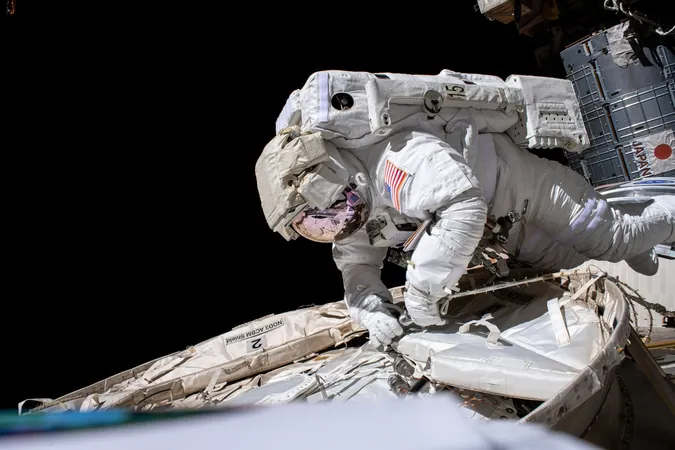
NASA Astronauts on a Mission to Uncover Microbial Secrets on the ISS Exterior
2025-01-22
Author: Daniel
Mission Overview
In an incredible quest for knowledge, NASA astronauts are gearing up for an unprecedented spacewalk to gather microbiological samples from the exterior of the International Space Station (ISS). With a focus on understanding how microbes might not only survive but thrive in the unforgiving environment of outer space, this mission promises to unveil intriguing secrets about life beyond our planet.
Sample Collection Areas
During this historical extravehicular activity, astronauts will take samples from strategic locations, particularly near life support system vents—areas known for potential microbial activity. The findings from these samples will be analyzed back on Earth, potentially revealing how the ISS may release microorganisms into the cosmos.
The ISS External Microorganisms Experiment
Part of a groundbreaking initiative dubbed the ISS External Microorganisms experiment, this project dives deep into the unique world of microorganisms residing on the outer surfaces of the ISS. While we often consider the risks posed by pathogens in space, it's vital to note that the human microbiome, teeming with essential microbes, inevitably accompanies astronauts on their journeys.
Expert Insight
NASA microbiologist Sarah Wallace emphasizes, “We can’t sterilize everything we send into space, and don’t want to; our bodies are natural ecosystems of microbes that help maintain our health. These unique microbiomes contribute to the overall microbial landscape of the ISS.”
Extraterrestrial Similarities
Interestingly, the conditions outside the ISS resemble an alien world—radiation, microgravity, and severe temperature fluctuations play a significant role in shaping these extraterrestrial microbial communities. Many of these so-called extremophiles showcase astonishing resilience and adaptive capabilities.
Implications for Space Exploration
With mutations occurring under the extreme pressures of space, these microbes could give us vital insights into the future of space exploration, particularly for manned missions to the Moon or Mars.
Tracking the ISS Microbiome
NASA's ongoing investigation into the ISS microbiome does not end with internal assessments; astronauts routinely collect swabs from the interior to track these life forms. The upcoming external sample collection aims to determine if the ISS is shedding some of its resident microorganisms, potentially influencing broader theories about life beyond Earth.
The Panspermia Hypothesis
One such theory is Panspermia, which proposes that life might have originated in distant corners of the galaxy before making its way to Earth. For the Panspermia hypothesis to hold water, scientists need to consider whether some microbial ancestors could survive the harsh realities of the space environment, akin to the conditions found outside the ISS.
Research Insights
Research into extremophiles from Earth has provided promising results; organisms like tardigrades and certain algae have demonstrated remarkable endurance in space's vacuum. By exploring microbial life decoupled from Earth, scientists hope to learn how life could spread across the cosmos.
Conclusion
As we venture further into the great beyond, understanding how microorganisms behave in space is crucial. The results from this upcoming mission could reshape our approach to astrobiology and deepen our comprehension of potential contamination in space exploration. Just think—what if, one day on Mars, we discover life, only to question if it’s a true Martian organism or just another hitchhiker from Earth? Stay tuned as this fascinating exploration unfolds!



 Brasil (PT)
Brasil (PT)
 Canada (EN)
Canada (EN)
 Chile (ES)
Chile (ES)
 Česko (CS)
Česko (CS)
 대한민국 (KO)
대한민국 (KO)
 España (ES)
España (ES)
 France (FR)
France (FR)
 Hong Kong (EN)
Hong Kong (EN)
 Italia (IT)
Italia (IT)
 日本 (JA)
日本 (JA)
 Magyarország (HU)
Magyarország (HU)
 Norge (NO)
Norge (NO)
 Polska (PL)
Polska (PL)
 Schweiz (DE)
Schweiz (DE)
 Singapore (EN)
Singapore (EN)
 Sverige (SV)
Sverige (SV)
 Suomi (FI)
Suomi (FI)
 Türkiye (TR)
Türkiye (TR)
 الإمارات العربية المتحدة (AR)
الإمارات العربية المتحدة (AR)